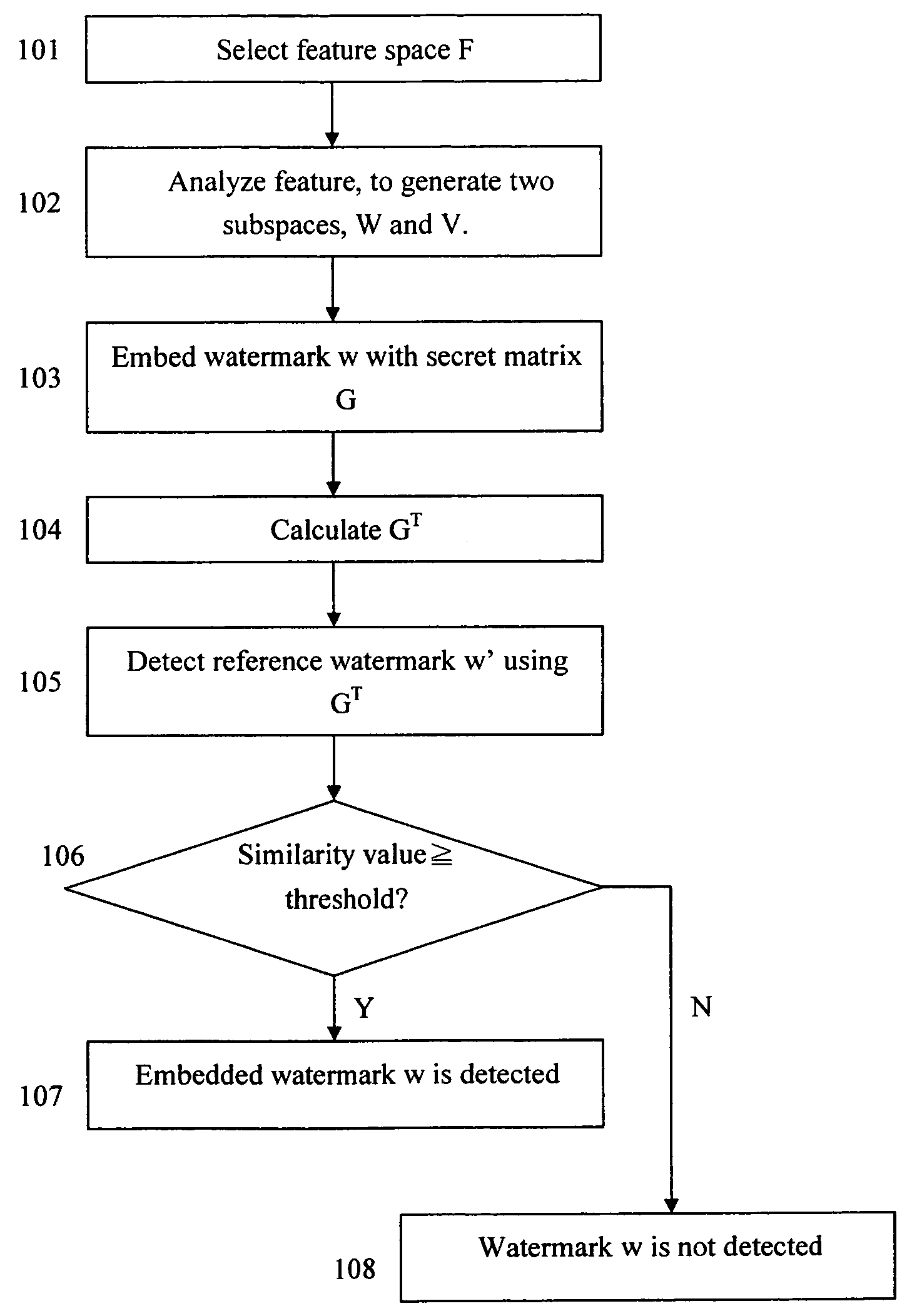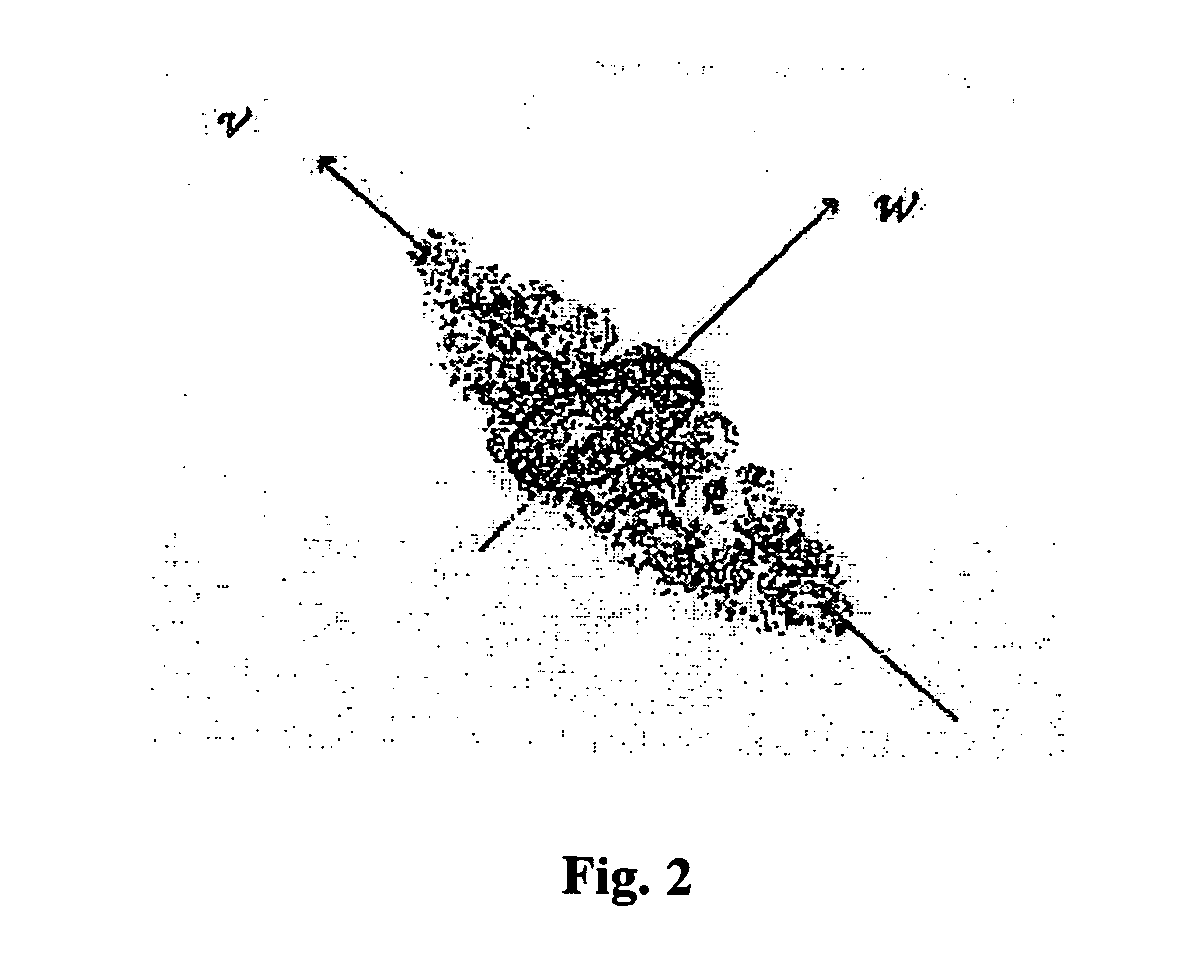Asymmetric subspace watermarking
a subspace and watermarking technology, applied in the field of asymmetric watermarking technology, can solve the problems of asymmetric watermarking systems suited for commercial use, requiring a great deal of bidirectional communication between owners and being unable to meet the requirements of the entire system,
- Summary
- Abstract
- Description
- Claims
- Application Information
AI Technical Summary
Benefits of technology
Problems solved by technology
Method used
Image
Examples
embodiment
[0047]An embodiment of the asymmetric watermarking method of this invention will be described hereinafter. FIG. 4 shows the flowchart of an embodiment of the asymmetric watermarking method of this invention. As shown at 401 in this figure, 61 digital image files are obtained. Their size ranged from 223 by 342 pixels to 512 by 512 pixels. At 402, use the full frame DCT to each image, then at 403 select DCT coefficients from their upper left 32 by 32 corners to form their feature images. The coefficients corresponded to 32 horizontal low-frequency bands and 32 vertical low-frequency bands. Thus, the obtained feature space had a dimension of 1024 frequency bands.
[0048]At 404, we generate from each image a set of 100 forged images by means of image processing. Processing included: blurring (with B-spline kernel), JPEG compression, scaling, rotations (with −5°≦θ≦5°), translations (by shifting at most ten pixels either up, down, to left or to right), adding random noise, stirmark, various...
PUM
 Login to View More
Login to View More Abstract
Description
Claims
Application Information
 Login to View More
Login to View More - R&D
- Intellectual Property
- Life Sciences
- Materials
- Tech Scout
- Unparalleled Data Quality
- Higher Quality Content
- 60% Fewer Hallucinations
Browse by: Latest US Patents, China's latest patents, Technical Efficacy Thesaurus, Application Domain, Technology Topic, Popular Technical Reports.
© 2025 PatSnap. All rights reserved.Legal|Privacy policy|Modern Slavery Act Transparency Statement|Sitemap|About US| Contact US: help@patsnap.com



